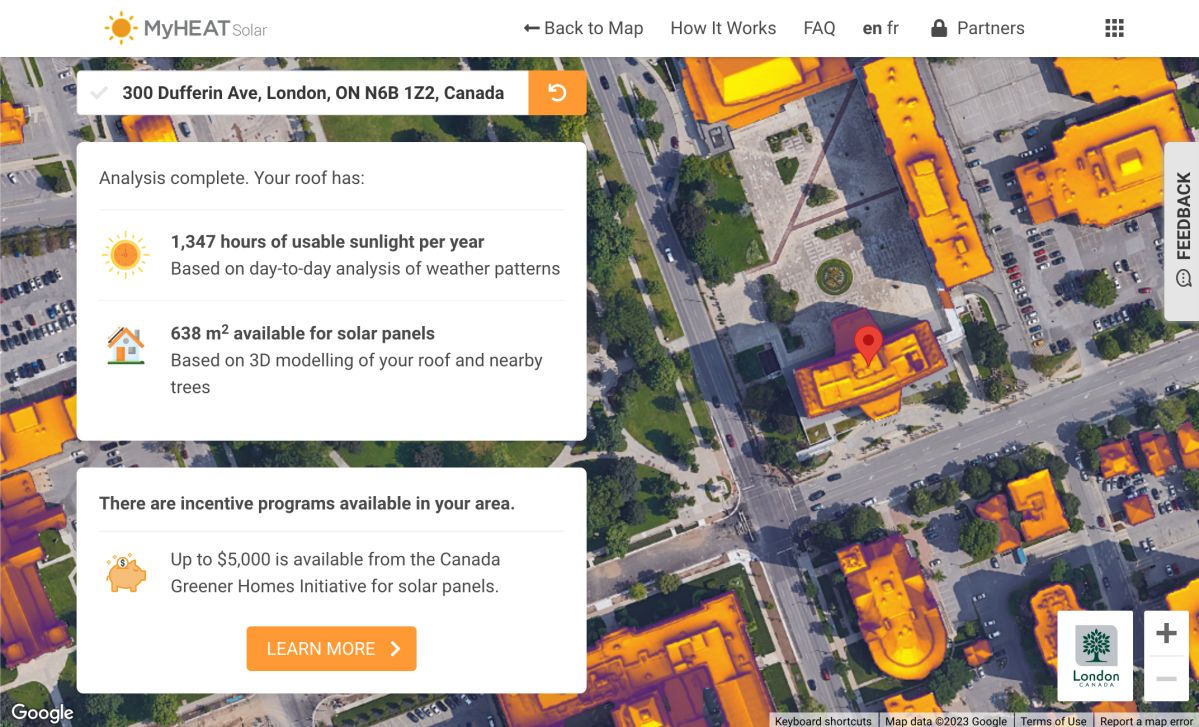Londoners considering purchasing solar panels for their home now have an easy tool they can use to assess the environmental and financial benefits of doing so.

City officials unveiled last week that they had partnered with the Alberta-based website MyHEAT Solar to provide the online tool, which utilizes 3D mapping data from Google’s Project Sunroof.
Through MyHEAT Solar’s website, Londoners can see at a glance what side of their house would be best suited for solar panels, and how many hours of usable sunlight hit their roof every year.
Residents are also able to see how much of their roof could be used for solar panels, and are provided a suggested installation size based on their average monthly hydro bill if they wish to fully cover their household hydro costs.
For example, residents with a monthly hydro bill of $100 should install 32 solar panels, each 1.65 by 0.992 metres, to generate about 9 kWh of electricity annually, according to the website.

Get daily National news
Londoners can also see how much the panels are estimated to cost upfront after incentives, how much money they will save after 25 years of usage, and their estimated environmental impact.
The new online tool comes nearly a year after a Climate Emergency Action Plan was endorsed by members of London city council. Councillors declared a climate emergency three years earlier. The plan includes a goal of reaching a 55 per cent reduction in greenhouse gas emissions by 2030, rising to 65 per cent by 2035, 75 per cent by 2040, and net-zero by 2050.
“One of the things that we have found when we talk to Londoners about the types of climate actions they’d like to take — usually solar panels on roofs … we have found, just talking to people, (that) it’s always a popular topic that comes up,” said Jamie Skimming, manager of energy and climate change with the City of London.
“In our Climate Emergency Plan … one of our big areas of focus is, we essentially want to give Londoners tools and resources to help them figure out what type of climate actions they would want to do, and putting solar panels on your roof is one of many choices that Londoners could do.”
Skimming adds that using solar panels at home will also reduce demand at gas-fired power plants in the province.
In a statement, Jay Stanford, director of climate change, environment, and waste management at the city, said London’s climate action plan identified single-family homes as being the second-largest source of greenhouse gas emissions in the city.
“Renovating existing homes with energy-saving and zero-emission improvements like solar panels is a priority included in London’s plan,” he said.
More information can be found on the MyHEAT Solar website and on London Hydro’s website.












Comments